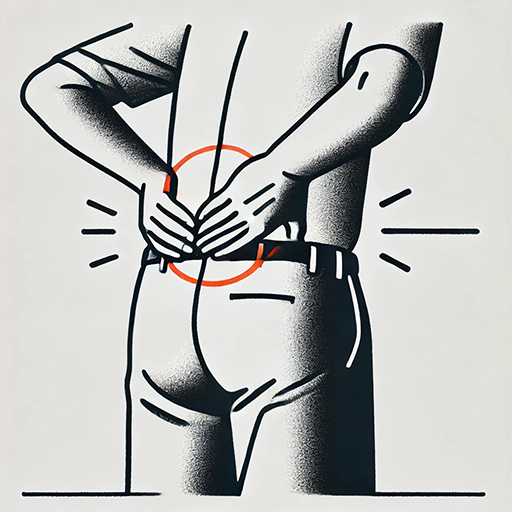How to Fix Muscle Imbalances: Corrective Exercises for Better Performance

Jamal Habib

How to Fix Muscle Imbalances: Corrective Exercises for Better Performance
Muscle imbalances are one of the most common issues that impact strength, mobility, and athletic performance. Whether you’re an athlete, lifter, or everyday gym-goer, imbalances can lead to poor movement patterns, compensations, and even injuries over time.
As a NASM Certified Personal Trainer, I’ve seen firsthand how addressing muscle imbalances through corrective exercises can improve performance, posture, and injury prevention.
In this post, I’ll break down:
✅ What muscle imbalances are
✅ Why they happen
✅ Signs you have a muscle imbalance
✅ The best corrective exercises to fix them
What Are Muscle Imbalances?
A muscle imbalance occurs when one muscle or muscle group is stronger, tighter, or more dominant than its opposing muscle. This creates asymmetry in strength and mobility, leading to dysfunctional movement patterns and injury risk.
🔹 Example: If your right quad is stronger than your left, your squat might feel uneven, and your left knee may cave inward.
What Causes Muscle Imbalances?
Muscle imbalances develop over time due to:
- Favoring One Side (Dominant Side Compensation)
✔️ Always carrying a bag on one shoulder
✔️ Kicking or throwing with the same leg/arm
✔️ Using one side more in daily tasks
- Poor Training Habits
✔️ Favoring bilateral (two-sided) exercises without unilateral (single-side) training
✔️ Relying on machines instead of free weights
✔️ Poor form or range of motion during lifts
- Sedentary Lifestyle & Postural Issues
✔️ Sitting for long hours = Tight hip flexors & weak glutes
✔️ Poor posture = Tight chest & weak upper back
✔️ Looking down at screens = Tight neck & rounded shoulders
- Injury or Previous Surgery
✔️ After an injury, people tend to favor the uninjured side, leading to weakness and instability on the injured side.
Signs You Have a Muscle Imbalance
Wondering if you have muscle imbalances? Here are common signs:
✔️ Uneven strength – One side feels stronger during lifts
✔️ Postural issues – Rounded shoulders, anterior pelvic tilt, knee valgus
✔️ Limited mobility or flexibility on one side
✔️ Pain or discomfort in one area – Doctor visit/note is required before seeing me
✔️ Compensations in movement – One hip hikes up, shoulders shift when pressing
How to Fix Muscle Imbalances: Corrective Exercises
The best way to correct muscle imbalances is to:
✅ Increase unilateral (single-limb) training
✅ Strengthen weak muscles and stretch overactive ones
✅ Improve movement patterns and posture
✅ Be mindful of everyday habits that cause imbalances
Here are the best corrective exercises for common muscle imbalances.
1. Fixing Upper-Body Imbalances (Chest vs. Back, Shoulder Dysfunction)
🔹 Common Problem: Tight chest & front delts, weak upper back & rear delts → Leads to rounded shoulders & poor posture
Corrective Exercises:
✅ Face Pulls – Strengthens rear delts & upper traps
✅ Single-Arm Rows – Corrects asymmetry in the back
✅ Scapular Wall Slides – Improves shoulder mobility
✅ Chest Stretch – Loosens tight pecs
2. Fixing Core Imbalances (Weak Obliques, Low Back Pain)
🔹 Common Problem: Weak obliques & deep core muscles, tight lower back → Leads to poor spinal stability & back pain
Corrective Exercises:
✅ Side Planks (Unilateral) – Strengthens obliques
✅ Dead Bugs – Activates deep core muscles
✅ Pallof Press – Builds anti-rotation core strength
✅ Glute Bridges – Engages core & fixes anterior pelvic tilt
3. Fixing Lower-Body Imbalances (Quad vs. Hamstring, Glute Activation)
🔹 Common Problem: Overactive quads, weak hamstrings & glutes → Leads to knee pain & anterior pelvic tilt
Corrective Exercises:
✅ Bulgarian Split Squats – Unilateral leg strength
✅ Single-Leg Romanian Deadlifts – Strengthens hamstrings & glutes
✅ Glute-Ham Raises – Fixes hamstring weakness
✅ Hip Flexor Stretch – Improves anterior pelvic tilt
4. Fixing Side-to-Side Strength Imbalances
🔹 Common Problem: One arm or leg is stronger than the other, causing compensations in movement
Corrective Exercises:
✅ Single-Arm Dumbbell Press – Corrects pressing imbalances
✅ Single-Leg Step-Ups – Balances lower-body strength
✅ Dumbbell Rows (Single-Arm) – Fixes asymmetry in the back
✅ Landmine Press (Single-Arm) – Builds unilateral shoulder strength
🚨 Tip: Always start with the weaker side first, then match the reps/weight on your stronger side.
How to Program Corrective Exercises in Your Workouts
💡 Here’s how to structure your training to correct muscle imbalances:
🏋️♂️ Step 1: Add Unilateral Movements
👉 Incorporate single-arm & single-leg exercises in every workout
🏋️♂️ Step 2: Prioritize the Weak Side
👉 Start with the weaker side & perform extra reps if needed
🏋️♂️ Step 3: Improve Mobility & Flexibility
👉 Stretch tight muscles and activate weak muscles before workouts
🏋️♂️ Step 4: Train Proper Movement Patterns
👉 Focus on form, full range of motion, & control
Final Thoughts: Fixing Muscle Imbalances for Long-Term Performance
Fixing muscle imbalances isn’t just about looking balanced—it’s about optimizing performance, preventing injuries, and improving movement quality.
🚀 Key Takeaways:
✅ Identify weak and tight muscles
✅ Use unilateral exercises to correct imbalances
✅ Prioritize mobility and flexibility
✅ Train smarter, not just harder
💪 Want a custom training plan to fix muscle imbalances & improve performance? Let’s work together to create a personalized corrective exercise program just for you!
📩 Contact me today to start training smarter!
